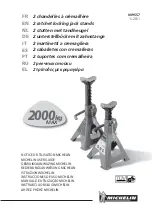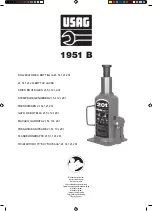
6
Installation
Step 1 – Ready the Tow Vehicle and Trailer
Park the trailer and tow vehicle on flat, level ground and in line with each other. Chock the
trailer.
For accurate installation the tow vehicle and trailer should be loaded just as they will be while
traveling. This includes propane, water, ATVs, generators, and/or any other cargo that the tow
vehicle or trailer will carry.
Check and inflate all tires to their proper pressure.
Tow vehicle auto-level systems should be disabled or turned off temporarily. Auto leveling and
air suspension systems will decrease the amount of weight distribution provided by the hitch after
setup. See Appendix for more information.
Step 2 – Install the Hitch Ball
Tools needed:
• Torque wrench capable of 250 ft-lbs
• 1 1/2” socket
Á
WARNING
Never exceed the specified weight ratings for the trailer, tow vehicle, hitch,
hitch ball, or any other towing equipment.
Select a ball with a 1” — 1 ¼” diameter threaded shank. The weight rating must equal or exceed
your trailer’s gross vehicle weight (GVW). Torque the nut to the manufacturer’s specifications.
The hitch ball should be tightened to 250 ft-lb, or to the recommended torque specification of the
hitch ball manufacturer. Contact an authorized e2 hitch dealership for service appointments and
cost if you need help installing the hitch ball.
































